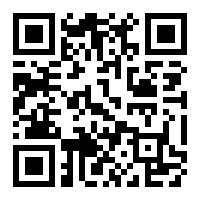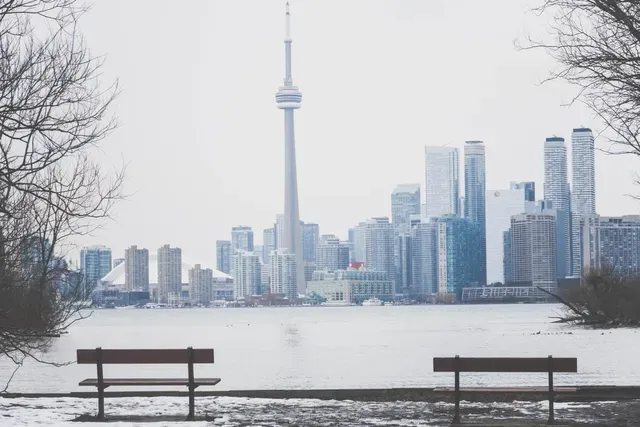The truth about money and the current neoliberal paradigm
July 5, 2019
Erik Fertsman
There is, perhaps, nothing more confusing than the origin of "money." It's even more so when discussed today within the confines of the neoliberal paradigm. In this post, I explain money and the neoliberal paradigm, then show how they just don't quite fit well together.
There's a bit of a debate going on about a certain "brand" of economics and how it doesn't fit well within the realities of how our financial and political systems operate.
That brand is neoliberal economics. It encompasses social, political, and economic factors that provide politicians, economists, and political scientists with a model that can be followed to create all sorts of policies. It's kind of a world view, or a lens through which to understand things. At its core, the theory argues how economic development is better in the hands of the private sector and should be steered away from government. As a result, you get a neoliberal "paradigm" with open international borders (free-market capitalism), shrinking government spending, less regulation, and eventually everything is privatized. Sounds good, right?
Over the last few decades, many politicians and economic policymakers have embraced neoliberalism as ideology. And you can easily understand why: the world is a very complicated engine, and if you have a theory that provides you with a simple but convincing framework on how things work, how to make things more "efficient," then you'll jump right on it. Neoliberalism has been so
influential and penetrating, it has supplanted much of our thinking, to the point where, certain things like money and finance don't actually fit within the model.
Let me explain...
What is money?
Physical notes and coins
Money, that physical stuff in your pocket, under your mattress, or in your safe, is cash created by the central bank responsible for that currency. So, if it's Canadian dollars, it's the Bank of Canada (BoC) that issues that money. If it's US dollars, then it's the Federal Reserve (Fed) that issues the currency. Most people believe this physical money is issued by their government. They might be wrong.
You see, the BoC, for example, is majority "owned" by the Canadian ministry of finance. The finance minister has the shares to the bank in his desk. But the Fed system (there are 12 regional banks), at law, is owned by private commercial banks. There's a big difference here. US dollars are not minted by the government, but Canadian dollars are.
It's also important to understand how this money comes into existence. Who owns it when it's created? When central banks "mint" physical notes and coins, it turns into an asset
on their accounting books (a positive value). At the same time, those notes and coins turn into a liability
for whomever borrowed them from the central bank. In other words, it's something that someone needs to pay back! When that someone does
pay the balance back, the central bank effectively destroys the money it initially created. Cool, huh? For this reason, money is debt. From its very existence, physical cash is a promissory note or coin that must be paid back in full. Once it is, it's gone forever. Remember that.
Of course, central banks don't go hunting for their money back just to burn it. They let it circulate for many years to provide "liquidity" for people to buy and sell things - that is, for the purpose of trade. You don't have an economy if nothing trades, and cash is one way of providing oil to grease the economic engine.
Digital bank deposits (fountain pen money)
Physical cash, though, is only about three percent (3%) of the entire supply of "money" in an economy. And, as you can see, it may or may not be issued by a government. So, where does the rest come from, and is it issued by the government?
The short answer, is that nearly all (97%) of the money in the economy is created by private banks; companies with private shareholders who have a license from a central bank. If they have a license from the BoC, then they create Canadian dollars. If it's a license from the Fed, they create US dollars. Whereas, the physical notes and coins the central banks create are just that, notes and coins, the money commercial banks create are referred to as bank deposits
or also referred to as "fountain pen money." These days, this money only exists in digital format on a computer server, somewhere.
Here's where things might get a little tricky: private commercial banks create bank deposits out of nothing. Economists sometimes use the term ex nihilo, which makes things sound a bit more sophisticated. There is no physical paper behind a bank deposit. A bank only needs a banking license and then it can start creating digital money! Of course, the money creation process is done through lending. Banks can't create money without it being a function of lending.
I know I said in the above somewhere that, when physical notes and coins are created they are an asset for the central banks. Well, here's the thing, when banks create bank deposits (or the central bank creates physical cash) two items are created at the same time:
- An asset in the form of a "credit"; and
- A liability in the form of a bank deposit.
Money and the political spectrum
Most people get shocked, become in denial, or simply do not understand (or want to understand) that money, for the most part, is created out of nothing, by and for
private interest. I've noticed for a while that, no matter how you explain it, the origins of "money" and how it's created simply don't fit within the current time we live in.
Our time is dominated by ideological, and "political spectrum" type thinking or ways of life. We now want smaller (or bigger) government, more (or less) efficient public service, less (or more) government spending, and so on. But when it comes to money, pretty much everyone thinks government does it (Positive Money
did a survey on this a number of years ago where the majority of respondents identified the government as the creator of money).
For example, yesterday in The Guardian,
professor Mary Mellor wrote in an article:
While progressive proposals for public spending are decried as burdening the hard-pressed taxpayer, the right is happy to use public money to rescue the banks or boost their electoral chances...
It is assumed that public spending depends on extracting money from the market and that money (like gold) is always in short supply. Neither is true. Both the market and the state generate money – the market through bank lending and the state through public spending. Both increase the money supply, while bank loan repayments and taxation reduce it. There is no natural shortage of money – which today mainly exists only as data.
Indeed, the left is looking to spend lots of public funds in order to makeup the short-falls of wages, people's needs, and contribute, overall, to the well-being of citizens through government spending. In other words, progressives are now trying to advocate for a large role for government in economic development. Meanwhile, the right is looking to keep private enterprises employing people rather than engineering "hand-out" programs, as it were. This latter argument is quite firmly and obviously rooted within neoliberal arguments of efficiency and the superior role of private industry in economic development. Guess what? Neoliberals, and most conservatives don't understand money if they believe money is in short supply like gold is. But neither does the left...
Professor Mellor gives us a look into how the left has begun to reason. It's not factually correct to suggest that money is created through public spending (this is an argument embraced by modern monetary theory [MMT], too). Where does the government get its money? Taxation and fund-raising. While a central bank might be purchasing government securities (effectively lending money to the government) with newly-created credit, it does so in order to achieve its monetary policy goals (interest rates, inflation, etc.). However, this money that the central bank uses to buy government securities constitutes a mere fraction of the total money creditors have shoved into government securities.
Most of the money that government obtains is through taxation in the form of bank deposits from someone's wage, capital gains, sales, licensing, and so on. Whenever this tax money is not enough, the government goes to sell "securities" in the bond market, and collects money from regular investors (people like you and me) who have either already borrowed the money, or simply earned the money (which we intend on investing in the government) through income or wage. The money supply increases only when banks lend, and never through public spending. If banks with banking licenses simply stopped lending overnight, the money supply would freeze. Full stop. This is something neither the left, nor the right really understand.
Money and the neoliberal paradigm
So as you can see, for the most part, both the left and the right continue to operate within confines of neoliberal thinking. They see the world the same way, but want to get to economic development through different paths. The left wants government to play a larger role, but the right wants private industry to play a larger role. They don't understand how money is created, nor why it was created in the first place. It's not part of their ideology or their theory. Neoliberalism says absolutely nothing about banking and money. The result? MMT and other weird arguments like the one above, of which is put forward by the left and
right.
In that same article in The Guardian, Peter Mckenna wrote:
...the EU’s stability and growth pact requires that budget deficits and public debt be pegged below 3% and 60% of GDP respectively.
Such notions are the beating heart of austerity, and the European commission’s excessive deficit procedure taken against errant states has almost universally resulted in swingeing austerity programmes. These were approved and monitored by the commission and council, with the UK only taken off the naughty step in 2017 after years of crippling austerity finally reduced the deficit to 2.3% of GDP.
The best way to end austerity – and to sway voters – is to reject austerity as an ideology regardless of remain or leave, and rehabilitate the concept of public investment in a people’s economy.
Austerity stems from neoliberal thinking. It means cutting back on government spending, cutting back on social services, and cutting back on all kinds of other government spending. Peter thinks the EU's stability and growth pact that limits the size of budget deficits should be lifted, so that government can go on an economic development and spending crusade.
When you understand the realities of banking and how money is created, you realize how both the left and right, stuck in the neoliberal paradigm, have completely lost touch with the tools of economic development. The fact is, more
spending is
necessary in order to get out of the crappy situation we find ourselves in. In numerous reports here on fertsman.com, for instance, I've shown you how there is a positive correlation between the amount of money banks create (total assets) and economic growth (GDP). So should government be spending more? Only if they borrow money directly from licensed banks. Right now, they simply do not.
So who are the real economic development agents? Those with licenses to manufacture money. MMT could work just fine, but unfortunately government simply doesn't create money when it spends, only the banks do.
SHARE THIS ARTICLE
Enjoyed this article and want to support our work, but are using an ad blocker? Consider disabling your ad blocker for this website and/or tip a few satoshi to the address below. Your support is greatly appreciated.
BTC Address: 13XtSgQmU633rJsN1gtMBkvDFLCEBnimJX



